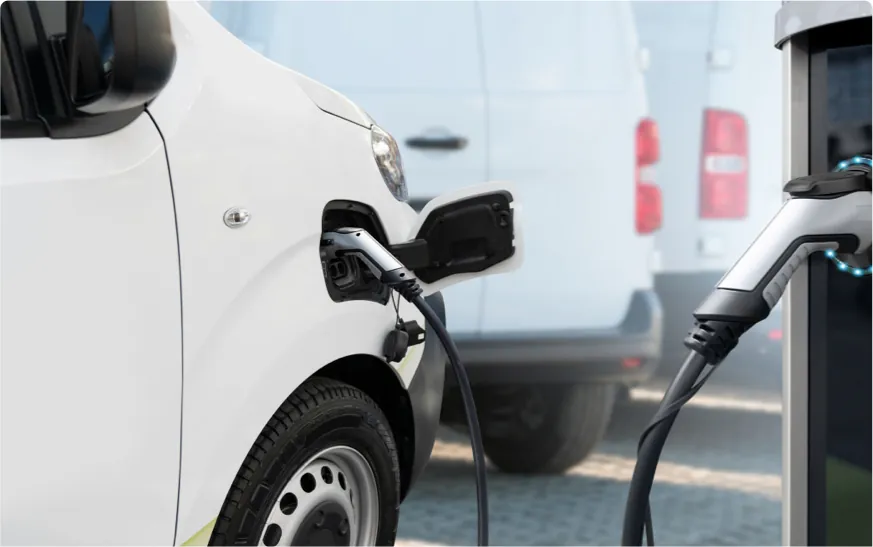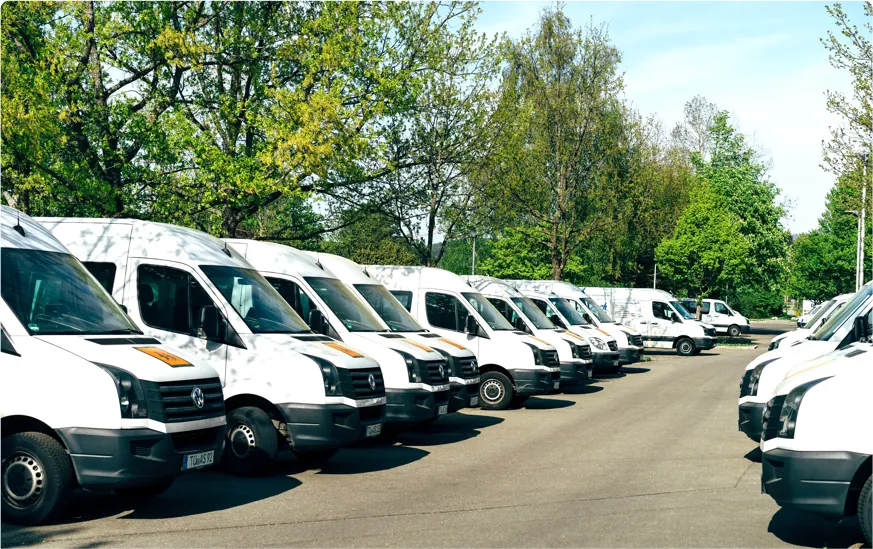The clock is ticking for fleets to electrify. As time counts down to federal, state and municipal electrification mandates, one thing is becoming clear – the global transition to electric fleets is inevitable.
Across the supply chain – from warehousing down to the last mile – corporates are starting to plan their fleet’s electrification roadmap. Global powerhouses like Amazon and Pepsi have begun touting their all-electric fleets – and for good reason. These corporates understand that those who make the first move, ahead of their peers, are best to capture the economic, operational and environmental benefits offered by the EV transition.
Whether a fleet is 40 or 4,000 vehicles strong, all fleet owners need to begin to think about where they are in their electrification journey.
The EV adoption spectrum
Fleets looking to electrify tend to fall within one of five categories. As fleets move along the spectrum from being an electrification “leader” to a “laggard”, they will see declining economic and operational benefits and an increasing risk of being stuck between playing catch up to their peers.
Market Leaders: If you’ve begun the journey of transitioning your fleet to electric, or are already operating an EV fleet, congratulations – you’re ahead of the curve! As a company that’s driven to invest today for leadership tomorrow, you’ve already made the switch because you have realized that EVs are more compelling economically, operationally and environmentally.
It will pay off, quickly too. Beyond increased uptime, you are fortifying your decarbonization goals and leaving permanent, positive ripples across your community – and the supply chain as a whole. Because you’re seeing where the industry is headed today, you are better prepared for tomorrow and every day after that. You might still be working out some of the kinks (we all are) but for now, you’ll see how going electric takes your bottom line to the next level.
Board Followers: Do you remember the early days of solar, when companies started investing in solar because they knew it aligned with their mission? Or better yet, because their board was poking them to do so. Is this how you’re approaching electrifying your fleets? If so, you might be a Board Follower – but don’t worry, there is nothing wrong with that.
Starting your fleet electrification journey now will enable you to achieve your corporate ESG goals faster than your peers. By putting corporate social responsibility at the top of your agenda, the transition will yield additional benefits for your fleet in no time.
Policy-Oriented: As you make decisions for your fleet, are you most solely concerned about upcoming mandates and regulatory policies? It’s a valid point – with new rulings like California Air Resource Board’s Advanced Clean Fleets, it’s becoming increasingly clear that soon all fleets could be mandated to ditch diesel.
While you might be electrifying your fleets because you want to move towards the compliance requirements of the market, fortunately, you’ll also be getting tangible benefits. You might not have as much name recognition as the market leaders dominating the space, but you’re well on your way to reaping the long-term economic and operational benefits of electrification.
Fast Followers: They say a little competition never hurts – but if you’re competing with peer companies in market recognition for electrification, the reality is, you won’t come out on top. That being said, second-and-third to market competitors will still receive the same economic and operational benefits as their peers, as well as ESG benefits for stakeholders and customers. They will, however, risk losing the branding opportunities that first-to-market brings.
We’re seeing this in a wide array of industries – take-home repair for example. The first home repair company dedicated to having an electric fleet provided differentiation in terms of their customers – all the others were just following suit. At the end of the day, this “Keeping up with the Joneses” effect will be important to move the needle on climate goals, but from an economic perspective, you want to be a first mover to really have a strategic head start.
Laggards: Do you feel pressure because your suppliers are electrifying and to serve you, you will have to electrify too? Does electrifying your fleet feel like a punishment? If you’re falling behind the others – and don’t have any plans to step up your EV game, you might be a laggard.
Unlike the other players across the spectrum, there is a risk you will miss the opportunity to capture the economic and operational advantages of electrification. Soon they’ll be no turning back and you don’t want to be racing to catch up. Pay attention to the policies, track what your peers are doing, and anticipate when your board and customers are going to ask you to follow the leaders at the top.
The importance of rising to the top
At Revolv, we’re consistently seeing fleets worry about moving too quickly; however, the bigger risk is moving too slowly. But why exactly should fleets make the move as soon as possible?
Fleets that take too long to electrify will miss out on the compounding cost savings and brand differentiation that comes from moving quickly. For most applications, fleets will undoubtedly discover that the transition to electric is inevitable – and those who start their electrification journey sooner, than later, will be better prepared for the future.
Don’t get left behind in the EV race
There’s no “one size fits all” approach to starting your fleet’s transition to electric. Ultimately, the fleets that successfully, and quickly, transition will do so by understanding they don’t need to navigate this journey on their own – and will find valuable partners to support the process.
So I ask: are you comfortable being a laggard, someone trying to catch up with others, or are you ready to be a leader and embrace this once-in-a-generation change to come out on top?

